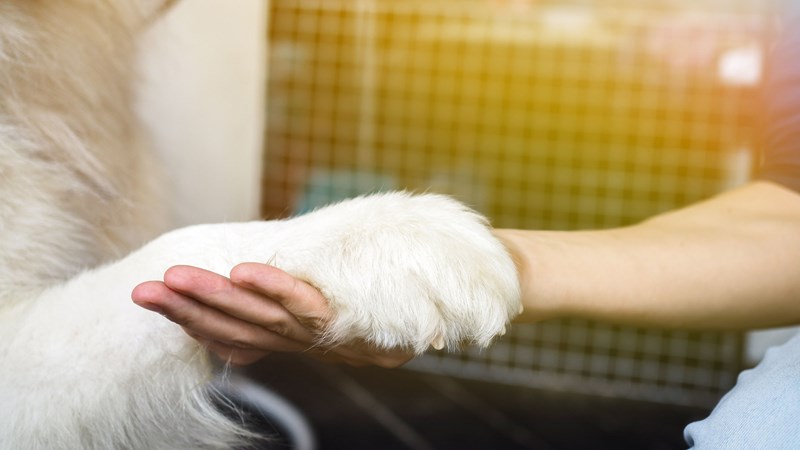
How to look after your dog's paws in the winter
Have you ever stopped to wonder whether your dog feels the cold, how their paws feel in the frost and snow, and why their toes don’t freeze?
Dogs have some clever ways to prevent their feet from freezing, but there are also other hazards out there for winter paws.
Dogs' paws are adapted for cold weather
Studies have shown that dogs have some amazing adaptations to keep warm and to prevent their paws from freezing in cold conditions. Arteries bringing warm blood from within the body to the paws are surrounded by a network of veins taking cooler blood back from the extremities. Instead of being lost through the skin, the heat from the arterial blood is transferred to the blood going back up the legs. This is known as a countercurrent heat exchange and helps to maintain the dog’s body temperature. Countercurrent heat exchanges are found in many species that are exposed to cold environments.
In low temperatures, complex mechanisms are triggered affecting the blood vessels in a dog’s legs and paws. Blood flow to the legs increases and the blood vessels in the pads dilate to carry more blood. Under the skin in the paw pads, many arteries and veins can connect directly to one another, and networks of veins carry the warm blood that’s come from the arteries. The blood bypasses the small capillaries in the paw pads, where heat is most easily lost, preventing the blood in the deeper tissues from cooling too much. Penguins also have this feature in their legs and it’s thought that it prevents tissue damage in extreme conditions.
Some researchers think that the very small, rough, conical protrusions on the skin of a dog’s paw pads may help with gripping in snow and ice and may even trap a thin layer of air between the pads and cold external surfaces.
The ancestors of dogs were able to inhabit cold climates and this may be why dogs retain these adaptations. In contrast, domestic cats, whose ancestors lived in warm and desert environments, don’t have the same mechanisms to retain body heat and protect their paws.
How to care for your dog’s paws in cold weather
Grit and salt used on roads and pavements can irritate your dog’s paws and the skin can become dry, cracked or sore. When your dog comes in from a walk, you can rinse their paws in warm (not hot) water and blot them dry with a towel. You might like to apply a little paw butter or paw balm afterwards, to moisturise them and prevent cracking.
Snow can collect and ball up between your dog’s toes. When this gets compacted and icy, it can become painful for your dog to walk. You might need to break apart the clumps during your walk if your dog looks uncomfortable, or you can melt the ice off using warm water when you get home. It can help to stop this from happening if you trim away the fur from between your dog’s toes so the snow has less to adhere to, and some paw butter between your dog’s toes might also help to prevent snow from sticking.
You could always consider getting your dog a set of boots to wear during icy and snowy weather. Be sure that they fit correctly and dry them out properly between each use.
Winter pet health advice
Check out our 'Winter Watch-Outs' with handy tips to help make sure your pet is happy and healthy during the chilly winter months.

Health Plans to keep your dog healthy
At Vets4Pets we offer a range of Health Plans that make essential routine treatments more affordable. You'll save money on things like annual vaccinations, flea and worm treatment and routine health check-ups.

How to cut a dog's nails
Keep your dog healthy and happy with regular nail trims, learn how to cut and trim dog nails from the experts at Vets4Pets.

Dog Advice
Read more of our expert dog advice to keep your dog happy and healthy.
